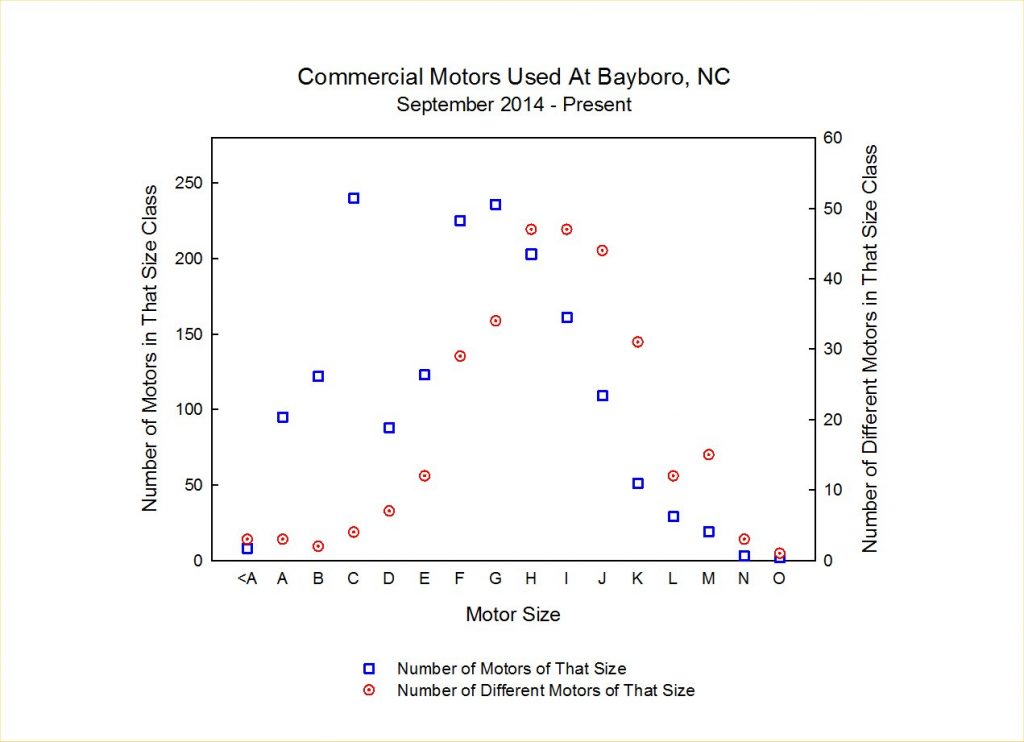Here is the combined summary of commercial motor use at Bayboro and Butner since the beginning of the 2014-2015 flying season.?? I have included a graph for those of you who like visual information, and an EXCEL spreadsheet for those who like the actual numbers,? I hope you enjoy the data!!?? I would like to draw your attention to several points and invite your comments on the ncrockets mailing list
1.? The 230+ C motors will surprise no-one, but the fact that there were almost as many F and G motors flown (even though all the data from Butner are included here) is significant.?? The F and G motor classes are traditionally for advanced younger flyers and those seeking experience for moving into high-power.? This indicates to me that the Bayboro group has a healthy group of people who are advancing within the hobby.
2.? There are some errors in the list.?? For example, there are three F16?s listed in the flight cards, and the F16 is a 32mm diameter boosted glider motor, and none of the rockets involved was a glider.?? Also, several of the motors listed on the flight cards are not on any of the lists of commercial certified motors and were flown by people who are known not to fly EX motors.?? Typo?s get made, especially by people who are working hard to get a rocket prepped and on the pad and holding on to the flight card for dear life while trying to keep it from blowing away.
3.? Designation duplications.?? I?ll give you a very good example of this problem:?? There are 33 ?G80?s? listed on the flight cards.??? Aerotech, Loki, and CTI all make motors that are designated G80, and they all use different propellants.?? Twenty of the 33 people who flew G80?s did not specify which G80 they were flying.
4.? Bayboro is one of the very rare launch sites at which more L motors were flown than M motors.? The L motor is usually the neglected step-child of the high-power range.?? Essentially no-one who is planning to make a level 3 certification flight bothers to check out their rocket with an L motor, and most L2 flyers tend to stick with J or maybe K motors.?? The reason for this almost certainly involves cost:? L motors usually cost a little more than half of what an M motor costs, and for most commercial motor buyers, that?s a lot of money.? The main reason that Bayboro sees more L motors than M motors is that a lot of University teams who are trying to make qualifying flights for SLI and IREC events use the L motor to deal with their heavy payloads.? The Bayboro club is privileged to host a lot of college (and high school) rocketry teams.
5.? Remember that a lot of the Bayboro experience involves homemade EX motors, which are not listed in this submission.?? The graph of commercial motors used is almost perfectly normally distributed on the upper side of the G range.?? If you put in the EX motors, the graph kicks back up at the top end with a LOT more K, L, M, and N flights (and double the O motor flights!).? A preliminary examination of the data shows that more K, M and N EX motors were flown at Bayboro during this interval than commercial motors of the same size.
Alan Whitmore
Prefect, Tripoli East NC


